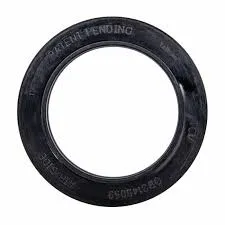10 月 . 10, 2024 17:33 Back to list
rotary shaft oil seal
Understanding Rotary Shaft Oil Seals Essential Components for Engine Efficiency
Rotary shaft oil seals are critical components in various machinery, particularly in engines and rotating equipment. These seals serve the primary function of preventing the escape of lubricants while simultaneously keeping contaminants out, ensuring that the machinery operates smoothly and efficiently. This article delves into the construction, function, types, and importance of rotary shaft oil seals in modern engineering applications.
Construction of Rotary Shaft Oil Seals
Typically made from synthetic rubber, elastomers, or other durable materials, rotary shaft oil seals consist of several key components. The main features of an oil seal include a sealing lip, a spring, and a body or frame.
- Sealing Lip The sealing lip is the part that makes contact with the rotating shaft. It is designed to conform to the surface of the shaft, creating a tight seal. The lip may have a flat or curved design, depending on the application requirements. - Spring Most oil seals are equipped with a spring that helps maintain the sealing lip’s pressure against the shaft. This additional pressure enhances the seal's effectiveness and prevents leakage over time.
- Body/Frame The body holds the sealing lip and spring in place. It is usually made of harder materials to withstand the environmental conditions and mechanical wear.
Function of Rotary Shaft Oil Seals
The primary function of rotary shaft oil seals is to prevent the leakage of oil or other lubricants from within a device while blocking external contaminants such as dirt, dust, and moisture from entering. This dual protection is vital for several reasons
1. Lubrication Maintenance Keeping lubricant within the system ensures adequate lubrication of moving parts, reducing friction and wear. This, in turn, prolongs the life of the machinery. 2. Contaminant Protection By preventing contaminants from entering, oil seals help maintain a clean operating environment, which is crucial for the performance and longevity of components.
3. Pressure Retention Many rotary operations occur under pressure. Oil seals aid in maintaining the required pressure levels, contributing to overall efficiency and performance.
Types of Rotary Shaft Oil Seals
rotary shaft oil seal

There are various types of rotary shaft oil seals, each designed to cater to different requirements based on application, temperature, speed, and pressure conditions
- Single Lip Seals These are the most common type, featuring a single lip that touches the shaft. They are typically used in low-pressure applications.
- Double Lip Seals These seals have two lips and provide enhanced protection against contamination and leakage. They are ideal for high-speed and high-pressure applications.
- Mechanical Seals Often used in more demanding applications, mechanical seals rely on a sliding motion between two surfaces and are common in pumps and compressors.
- Spring-loaded Seals Incorporating a spring mechanism, these seals provide higher sealing pressure and are used in applications where shaft movement or vibration is expected.
Importance of Rotary Shaft Oil Seals
The importance of rotary shaft oil seals cannot be overstated. These components play a vital role in maintaining the efficiency and reliability of machinery across various industries, including automotive, aerospace, and manufacturing.
In the automotive industry, for instance, oil seals are crucial for keeping lubricants contained in engines and transmissions, affecting fuel efficiency and performance. In industrial machinery, the longevity and functionality of equipment are often directly linked to the effectiveness of its sealing components.
Furthermore, regular maintenance and timely replacement of oil seals can significantly reduce the total cost of ownership of machinery. Preventing oil leaks not only protects the environment but also minimizes cleanup costs and prevents potential downtime caused by equipment failure.
Conclusion
In conclusion, rotary shaft oil seals are essential elements that contribute to the efficiency, reliability, and lifespan of mechanical systems. Understanding their construction, function, and varieties is vital for engineers, mechanics, and anyone involved in the maintenance of rotating machinery. Prioritizing the integrity of these seals ultimately leads to more efficient operations and enhanced performance in various engineering applications.